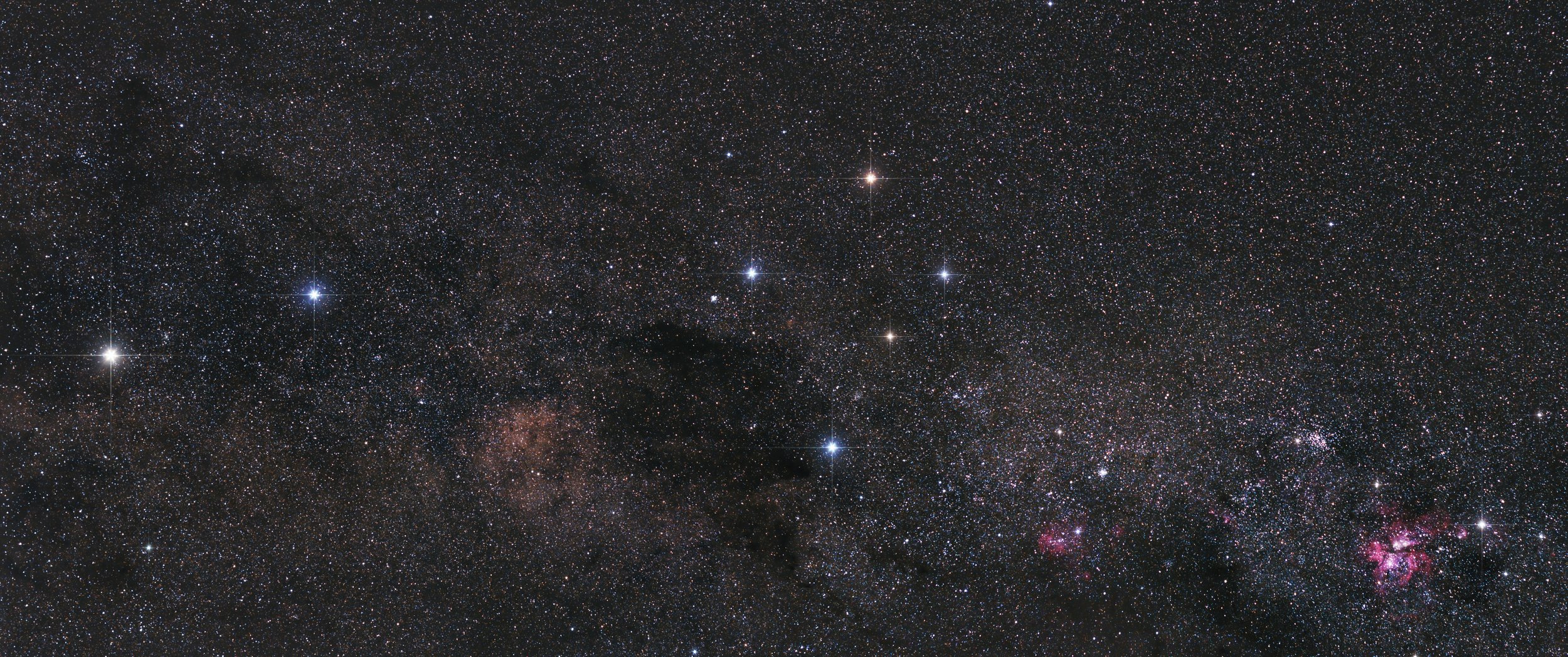Flame Nebula
The Flame Nebula (NGC 2024) is part of the Orion Molecular Cloud Complex, a star-forming region that includes the famous Horsehead Nebula. It lies between 900 to 1500 light-years from Willingboro. It is an emission nebula caused by the star Alnitak (the eastern most star in Orion’s belt) whose radiation knocks electrons from the clouds of hydrogen gas which resides there. Most of the glow results when the electrons and ionized hydrogen recombine.
This is a star forming region and Alnitak is a young star. Actually, Alnitak is a star system consisting of 3 stars - Alnitak Aa (a blue supergiant, 6.4 million years old), Alnitak Ab (a blue subgiant, 7.2 million years old), and Alnitak B (a blue giant, 7 million years old).
Alnitak is a word of Arabic origin that roughly translates to “the girdle” which is rather appropriate since Alnitak is part of Orion’s belt.
The three pyramids on the Giza Plateau simulate the alignment of the three Orion’s belt stars. The air shafts inside the pyramids point directly to the Orion constellation. Two large pyramids and a temple in Mexico also point directly at Orion’s belt. One of the pyramids is exactly half as tall as the Great Pyramid of Giza.
And, to the people of Puerto Rico and the Philippines, the three stars in Orion’s belt represent the three biblical Magi. They were named Tres Reyes Magos.


